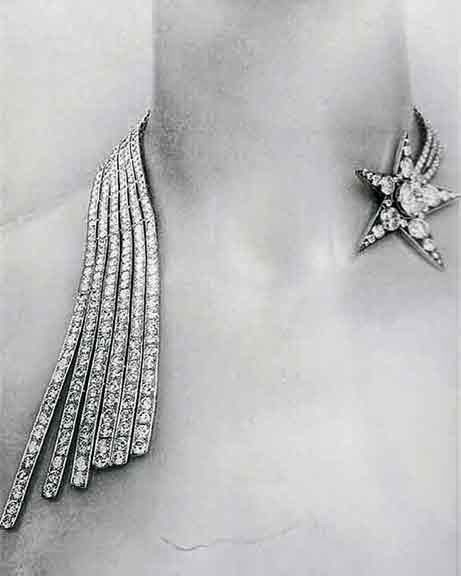According to our lecturer, Chanel didn't understand jewellery at all. In spite of the fact that she associated with very rich men, Chanel preferred fake jewellery. You can read about some of her lovers: Boy Capel; Hugh Grosvener, Duke of Westminster; Paul Iribe.
Westminster's entry mentions an emerald he gave Chanel. Susan told us a story that says Coco had an argument with the Duke on his yacht and she threw the emerald into the water. (So, she was the model for the old lady in the film Titanic as well as being a fashion designer, eh?) I figure Grosvener was an unpleasant character anyhow. In 1931, when being homosexual was still illegal, he 'outted' his brother-in-law, for personal and political gain. The story is actually known to quite a few of us, as it is supposed to be the basis for the incredible book Brideshead Revisited.
In searching for meaning in my notes I found there is a lot on the internet about De Beers diamonds and the year 1929. What I think Susan was explaining was that with the instability of the stock market after the crash of '29, interest picked up in buying diamonds. They were attractive for their high value and relative small size. People didn't trust putting money in the bank, so diamonds were in demand and their price rose. Susan explained that this same thing happened in the 1960s and is happening now. With the growing interest in diamonds, people needed teaching about value not just being about size, but also about colour and clarity.
We learned about a particular necklace design by one of Chanel's lovers, Paul Iribe. I tried to sketch this necklace, it was so perfect for its time. I don't remember the star, shown in the photo below, but the lines flowing around the neck are something like I drew and my note quotes Susan as saying 'the jewellery flows along with the evening gown'.
However my source for the photo says this Chanel necklace is by Patrick Mauries and the examples of Iribe are quite different in appearance, so I'm not sure what to think, other than this was a Chanel product.
I hadn't realised that there was something rather unlucky about being involved with Coco Chanel, even if she didn't throw your emerald gifts into the sea. I had forgotten that Boy Capel died in a car crash allegedly on his way to meet up with her. Reading about Paul Iribe, I learned that he died of a heart attack after a tennis game at Chanel's villa on Roquebrune Cap Martin, between Nice and the Italian border. They say she literally wore him out.
Next week we'll talk about cutting stones...




No comments:
Post a Comment